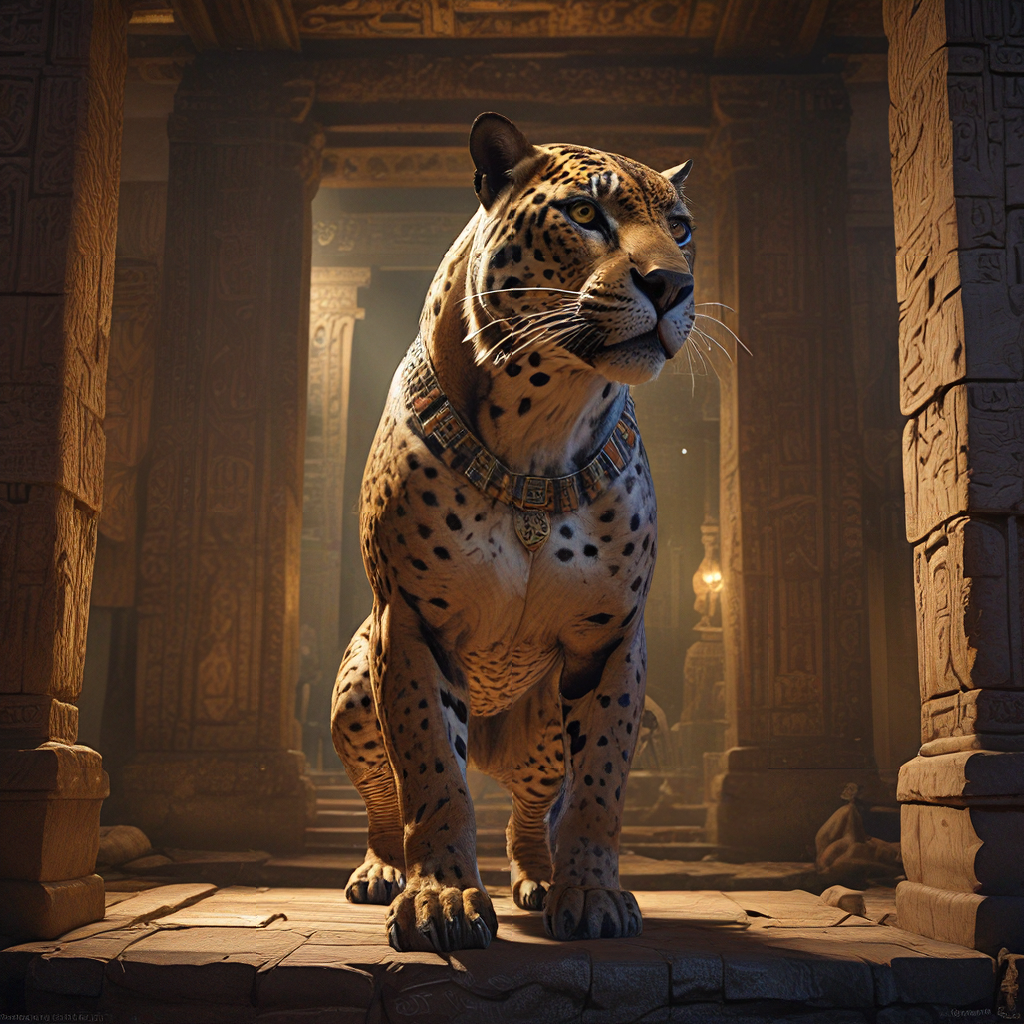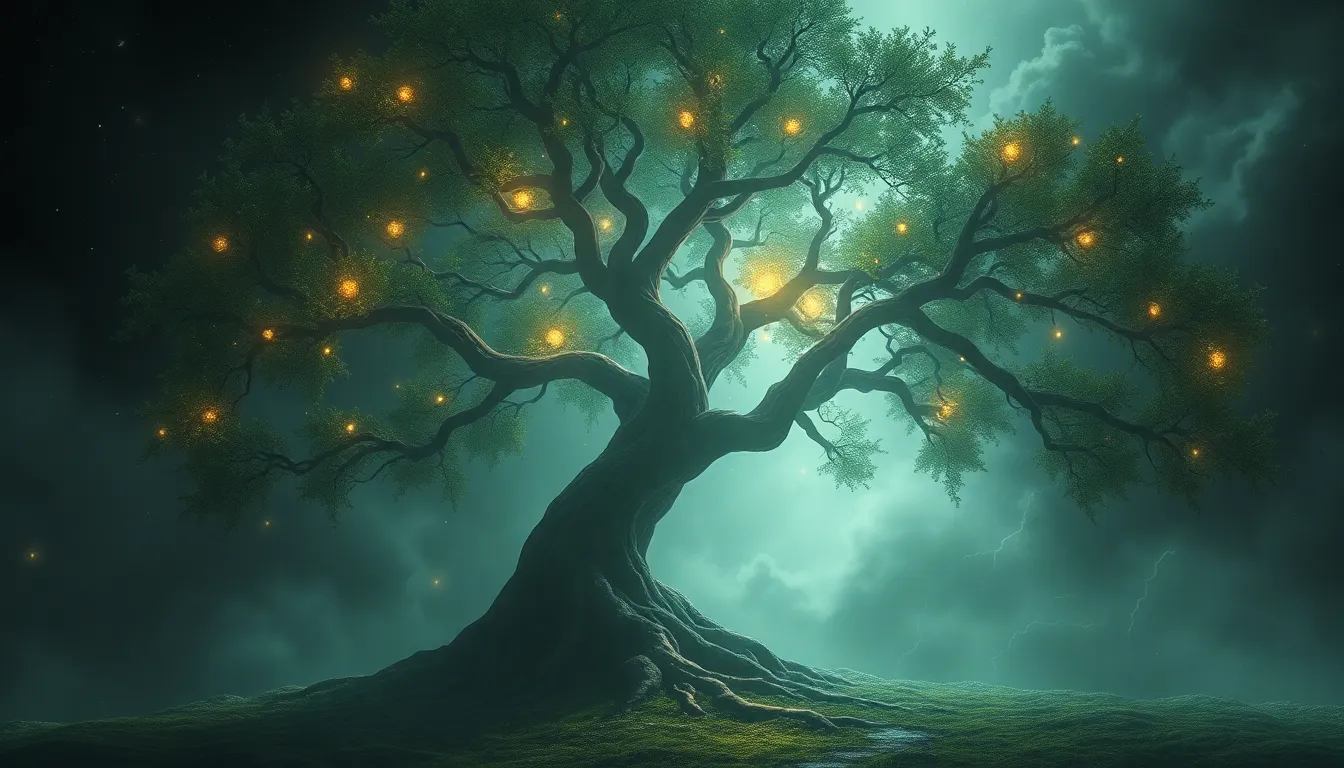Filipino Mythology: A World of Anitos
Filipino mythology is a rich tapestry woven with stories of gods, goddesses, spirits, and mythical creatures. At the heart of this vibrant world lies the concept of "anitos," which translates to "spirits" or "ancestors" in English. Anitos are deeply embedded in Filipino culture, shaping beliefs, rituals, and even the everyday lives of people for centuries. These powerful beings are not solely confined to the realm of folklore; they are seen as active participants in the world, influencing everything from harvests to personal well-being.
The Anitos: Spirits of Nature and Ancestors
Anitos are not singular entities; they represent a diverse spectrum of spirits residing in the natural world and the lineage of ancestors. They can be found in mountains, rivers, trees, and even within the homes of people. These spirits are believed to be responsible for the bounty of the land, the flow of water, and the protection of families. They are the guardians of natural resources, ensuring the balance and harmony of the environment.
Anitos can be benevolent, guiding and protecting people, or malevolent, causing misfortune and illness. Their nature often depends on how they are treated and whether they are honored or disrespected. In many stories, they are described as possessing human-like characteristics, including emotions, desires, and the ability to interact with the mortal realm.
The Pantheon of Anitos: A Diverse and Complex Web
The Filipino pantheon of anitos is vast and diverse, with each region and tribe having its own unique set of spirits. Some of the most well-known anitos include:
- Bathala: Considered the supreme deity, Bathala is the creator of the universe and the source of all life. He is associated with creation, power, and justice.
- Lalahon: The goddess of fertility and childbirth, Lalahon is invoked for bountiful harvests and successful pregnancies.
- Sidapa: The god of death, Sidapa is responsible for guiding souls to the afterlife. He is often depicted as a stern and somber figure.
- Agni: The god of fire, Agni is revered for his power to transform and purify. He is associated with the hearth and home, and his presence is sought during rituals and ceremonies.
These are just a few examples, and the list goes on. The diversity of anito figures reflects the rich cultural heritage of the Philippines, with each spirit embodying a specific aspect of nature or the human experience.
The Role of Anitos in Daily Life: From Guidance to Protection
Anitos play a significant role in the everyday lives of Filipinos. They are seen as protective guardians, offering guidance and support. People seek their favor through offerings, prayers, and rituals, hoping to gain their blessings.
For example, farmers would leave offerings of rice, fruit, and other crops at the foot of trees believed to be inhabited by anitos, seeking their aid in ensuring a bountiful harvest. Similarly, fishermen would offer fish to the spirits of the sea, asking for safe passage and abundant catches.
Anitos are also believed to intervene in matters of health, love, and fortune. Individuals might consult with shamans or spiritual healers to communicate with anitos, seeking their intercession in resolving personal issues or challenges.
The Anito’s Influence on Rituals and Ceremonies
Anitos are central to many Filipino rituals and ceremonies, which are designed to appease, honor, or seek the favor of these spirits. These celebrations often involve offerings of food, drink, and music, as well as prayers and dances.
One of the most significant rituals is the "pamamanhikan," where the groom's family seeks the blessing of the bride's ancestors before the wedding. This tradition is a testament to the enduring influence of anitos in family life and the importance of seeking their approval for major life events.
The "pambubuyog" is a healing ritual performed by a "manananggal," a shape-shifting creature in Filipino mythology, where they offer prayers and sacrifices to anitos for the well-being of the sick. These rituals demonstrate the interconnectedness of the human world with the spirit world and the power of anitos to influence the lives of people.
The Nature of Anitos: Benevolent, Malevolent, or Both?
Anitos, like humans, are not always purely good or bad. Their nature can shift depending on factors like their individual personalities, how they are treated by humans, and even the circumstances surrounding their interactions.
Some anitos are inherently benevolent, naturally inclined to protect and guide humans. These spirits are often associated with nature's positive aspects, like bountiful harvests, peaceful environments, and healthy families. They are seen as protectors, offering guidance and support to those who respect them.
However, other anitos can be malevolent, causing misfortune, illness, and even death. These spirits are often connected to negative natural occurrences, like storms, droughts, or disease outbreaks. They are typically associated with anger, resentment, or a sense of injustice, and they might lash out at those who disrespect them or fail to honor their wishes.
It's important to remember that most Filipinos believe that even malevolent anitos can be appeased and their wrath can be avoided through offerings, prayers, and rituals. Treating anitos with respect and acknowledging their power, even if they are perceived as harmful, is crucial in maintaining a harmonious balance between the human and spirit worlds.
The Legacy of Anitos in Modern Filipino Culture
Anitos are a vital part of Filipino heritage and continue to influence cultural practices, beliefs, and even everyday life. While modern Filipinos may not actively worship anitos as their ancestors did, their presence is subtly woven into many aspects of society.
For instance, many Filipinos still engage in traditional rituals and ceremonies, like "pamamanhikan," seeking the blessings of ancestors before significant life events. The practice of leaving offerings of food, drink, and flowers at ancestral graves is also prevalent, acknowledging the presence and influence of the departed.
The concept of "kapwa," a core value in Filipino culture emphasizing interconnectedness and empathy, can be traced back to the idea of interconnected relationships with anitos. Filipinos are encouraged to treat all beings, both human and supernatural, with respect and compassion, reflecting the belief in a shared existence and the importance of maintaining harmony within the spirit world.
Theories on the Origins of Anito Beliefs
The origins of anito beliefs are deeply rooted in the history and culture of the Philippines. Scholars have proposed various theories to explain the development of these animistic beliefs, which include:
- Indigenous Religions: Anito beliefs are often seen as a continuation of pre-colonial animistic religions prevalent in the Philippines before the arrival of Spanish colonization. These ancient belief systems revolved around the worship of nature spirits and ancestors, with powerful deities controlling various aspects of life.
- Influence of Nature: The Philippines' diverse and dynamic natural environment, with its mountains, rivers, forests, and seas, likely played a significant role in shaping anito beliefs. People observed the power of nature and attributed its forces to unseen spirits that needed to be honored and appeased.
- Ancestor Veneration: The practice of ancestor veneration, common in many cultures, likely contributed to the development of anito beliefs. Filipinos, like many other people, believe that their ancestors continue to exist in the spirit realm and have the power to influence the lives of their descendants.
The process of how these various factors intertwined to create the intricate web of anito beliefs is still a subject of ongoing research and debate.
The Influence of Indigenous Religions on Anito Mythology
The indigenous religions of the Philippines, including the beliefs of the Tagalogs, Ilocanos, Visayans, and other tribes, have profoundly influenced the development of anito mythology.
Each tribe had its own unique set of deities, spirits, and mythical creatures, reflecting their local environment, cultural traditions, and belief systems. These diverse indigenous religions contributed to the rich tapestry of anito beliefs, with each region developing its own distinctive interpretations and traditions.
For example, the Tagalogs, who inhabited the central region of Luzon, worshipped Bathala, the supreme deity, and various other anitos associated with nature, fertility, and war. The Ilocanos, in the northern region, recognized a different pantheon of anitos, including the powerful goddess, "Apo-laki," who represented creation and the earth.
The Visayans, in the central and southern regions, had a rich mythology revolving around the god of the sea, "Maguayan," and the goddess of love and beauty, "Kulaman." These examples demonstrate how indigenous religions shaped the diverse pantheon of anitos, with each tribe contributing to the rich tapestry of Filipino mythology.
The Evolution of Anito Beliefs: Adapting to New Realities
Anito beliefs have evolved and adapted over time, reflecting changes in the Filipino society and culture. The arrival of Spanish colonization in the 16th century brought about significant shifts in the religious landscape of the Philippines, with the introduction of Christianity.
While some aspects of anito beliefs were suppressed, many indigenous traditions and beliefs persisted, often blending with Christian teachings. For example, the practice of praying to saints was often seen as a way to connect with anitos, with certain saints being invoked for similar purposes as specific anitos.
The integration of Christian beliefs resulted in a syncretic blend of indigenous and foreign religious practices, with anitos being incorporated into Christian rituals and ceremonies. This process of adaptation demonstrates the resilience and adaptability of anito beliefs, as they continue to shape Filipino culture and spirituality.
Frequently Asked Questions (FAQs)
1. What is the difference between anitos and gods?
Anitos are generally seen as spirits or ancestors, while "gods" often refer to more powerful deities, like Bathala, who are considered creators and rulers of the universe.
2. Are anitos always benevolent?
No. Anitos can be benevolent, malevolent, or neutral, depending on their nature, personality, and how they are treated by humans.
3. What is the significance of offerings to anitos?
Offerings are a way to show respect and appease anitos, seeking their favor or protection. They can include food, drink, flowers, or other symbolic items.
4. How do anitos influence Filipino culture today?
Anitos continue to influence Filipino culture through traditional rituals, ceremonies, values, and even everyday beliefs, such as respecting ancestors and the natural world.
5. What are some examples of anito-inspired rituals?
"Pamamanhikan" (seeking ancestral blessings before a wedding), "pambubuyog" (healing ritual), and leaving offerings at ancestral graves are examples of rituals influenced by anito beliefs.



